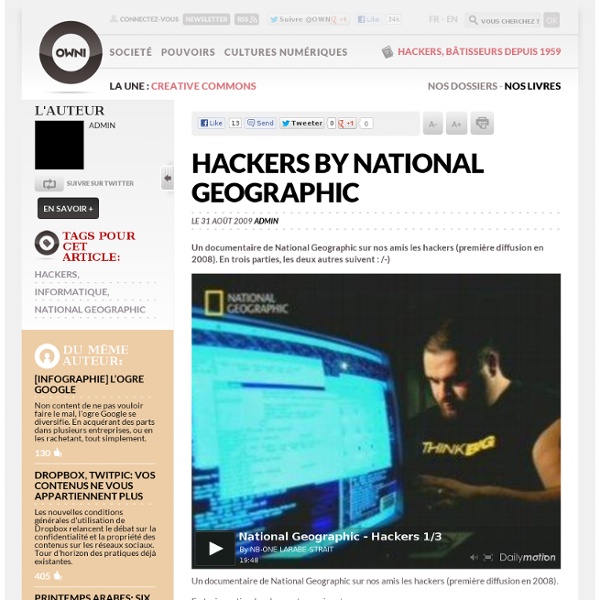



WikiScanner On December 21, 2012, a research group from Fondazione Bruno Kessler (it) released an open-source clone of WikiScanner called WikiWatchdog.[5] Design[edit] The tool's database contained 34,417,493 entries on anonymous edits (those by users who were not logged into Wikipedia) between February 7, 2002 and August 4, 2007.[3] Griffith stated that the database was constructed by compiling the anonymous edits included amongst the monthly public database dumps of Wikipedia. He claimed to have connected the organizations to their IP address with the assistance of the IP2Location, and through comparison had found "187,529 different organizations with at least one anonymous Wikipedia edit."[3] WikiScanner only worked on anonymous edits that provided an IP address, not edits by anyone logged-in under a username. The WikiScanner FAQ notes that edits cannot be positively attributed to representatives of a company, only to a computer logged in to a company's network. Media coverage and reaction[edit]
Les « bidouilleurs » de la société de l’information, par Jean-Ma En 2005, deux électroniciens découvrirent, stupéfaits, que les données confidentielles contenues dans la carte Vitale n’étaient pas protégées : on pouvait les lire, mais aussi les modifier. Pour d’obscures raisons, le mécanisme de sécurité n’avait pas été activé. L’affaire aurait pu faire scandale ; elle ne suscita que quelques articles de presse, et fut rapidement oubliée après que les responsables de la carte Vitale, tout en reconnaissant le problème, eurent déclaré qu’il serait corrigé. Quelques mois plus tard, l’un des deux électroniciens remonta au créneau en faisant remarquer que rien n’avait été fait. Aucun journaliste, aucun syndicat, aucune association de patients ne s’en inquiéta. Et ni la Commission nationale de l’informatique et des libertés (CNIL), censée garantir la protection de la vie privée, ni la direction centrale de la sécurité des systèmes d’information (DCSSI), autorité nationale de régulation chargée de la sécurité informatique, ne se saisirent du problème.
Hacker News | Skype protocol reverse engineered, source available I wouldn't venture to say this doesn't belong on HN since it really is interesting (if it was actually done correctly), but the files available for download are most likely illegal, were most likely created with pirated tools (IDA Pro/Hex-Rays, and yes, as a customer of theirs for over a dozen years I've reported it), and of course, the usual vilification of reverse engineering. If you're reading this on a desktop or laptop system (rather than a phone), then you are most likely using an "IBM PC Compatible" even if you're using an Intel based Apple, and hence, you're using the fruits of completely legal reverse engineering. The way to do reverse engineering legally is to have one team reverse engineer the target and completely document how it works. Once it's documented, another disconnected team writes a new implementation from the documentation. This process is how you're using an IBM PC Compatible today, so yes, reverse engineering for compatibility is perfectly legal. 1.) 2.) 3.)
#pdlt : Esprit hacker, es-tu là Xavier de la Porte, producteur de l’émission Place de la Toile sur France Culture, réalise chaque semaine une intéressante lecture d’un article de l’actualité dans le cadre de son émission. Désormais, vous la retrouverez toutes les semaines aussi sur InternetActu.net. Le mensuel américain Wired vient de livrer un article qui fait la couverture du numéro de mai titré : “Le pouvoir geek : comment la culture hacker a conquis le monde”. Le dossier consiste en un long papier de Steven Levy dont l’angle est alléchant. L’idéal hacker Je fais une parenthèse terminologique. Levy rappelle à quel point ces préceptes ont inspiré des générations de programmeurs, d’intellectuels et d’entrepreneurs et à quel point aussi toute personne qui utilise un ordinateur en profite, “l’internet lui-même existe grâce aux idéaux hackers”, résume-t-il. Comment le code façonne l’humanité Parmi les Titans, il y a évidemment Bill Gates. Autre figure intéressante, et moins connue, Andy Hertzfeld. Xavier de la Porte
skype-open-source Les hackers débrident la Chine La communauté des hackers, ces passionnés de la bidouille créative, se développe en Chine, comme en témoignent l'organisation de deux événements en ce printemps et la multiplication des hackerspaces. Ces derniers sont amenés à jouer un rôle dans le développement économique. L’État observe de près ce terreau fertile en innovation... et en contestation. Dans l’imaginaire, le hacker chinois est un vilain pirate, parfois à la solde du gouvernement. Si ces black hats sont effectivement une réalité, une communauté de “gentils” hackers prend son essor en parallèle. Jusqu’à présent fournisseur en leds et autres circuits imprimés des hackerspaces du monde entier, les Chinois mettent à leur tour la main dans le hack. Que mille hackerspaces fleurissent À l’origine du mouvement, on trouve des Chinois qui ont eu l’occasion de s’expatrier ou de beaucoup voyager. Ensuite, des autochtones pur jus ont fini par grossir les rangs. Satisfaire le marché intérieur Récupération gouvernementale
Skype protocol reverse engineered, source available for download Hello, I'am Efim Bushmanov a freelance researcher and here is my project files on skype research. While "Wall Street Journal" makes politics and skype today's trend, i want to publish my research on this. My aim is to make skype open source. And find friends who can spend many hours for completely reverse it. Now, most of hard things already done(for 1.x/3.x/4.x versions of skype). You have unique chance to take a look on skype internal protocol and encryption. Here is yet a working "send message to skype" code. Part of this code, idb files and decrypted binares was get from VEST corporation. Downloads: --- oops, no more binaries, skype & microsoft & DMCA was here --- skype_part2_ida.zip --- oops, no more binaries, skype & microsoft & DMCA was here --- Here is a torrent file: magnet:? P.S.
Grassroots Mapping